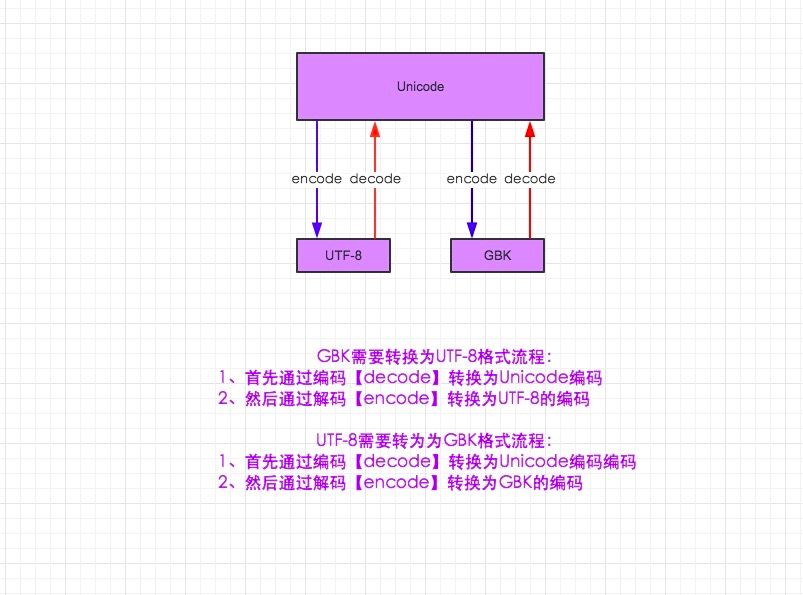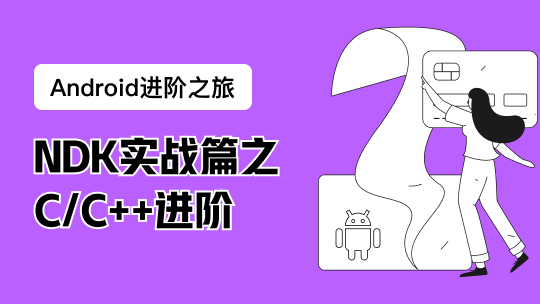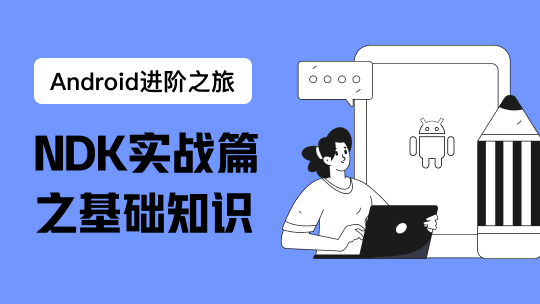C语言基础学习PYTHON——基础学习D02
20180801内容纲要:
1 字符串的系列操作
2 集合
3 文件的读写
4 字符编码转换
5 小结
6 练习:三级菜单(有彩蛋)
1 字符串的系列操作
特性:不可修改。('str' object does not support item assignment)
支持运算:切片、索引、min()、max()、len()等
关于字符串的操作:


#关于字符串的一些操作
'''
name = "zhang\tkanghui"
print(name.capitalize()) #capitalize首字母大写
print(name.count("a")) #count计数
print(name.center(50,"-")) #center(50,“-”)表示总共50个字符,输出占中间位置
print(name.encode())
print(name.endswith("ui")) #判断是不是以ui结尾
print(name.expandtabs(tabsize=30)) #将tab在输出时转成相应数量的空格
print(name.find("kang")) #找到字符开头的索引
'''
name ="my name is {name} and i am {year} old"
print(name.format(name='zhangkanghui',year=23)) #格式化输出
print(name.format_map( {'name':'zhangkagnhui','year':23} )) #以字典形式格式化输出
print(name.isdigit()) #判断是否为数字
print(name.isalnum()) #判段是否为阿拉伯
print('abc12/'.isalnum())
print(name.isalpha()) #判断是否为纯英语字母
print('Aa'.isalpha())
print(name.isdecimal()) #判断是否为十进制
print(name.isidentifier()) #判断是否为合法标识符
print(' ab'.isidentifier())
print(name.islower())
print(name.isnumeric())
print('1.2'.isnumeric()) #判断是否为纯数字,小数点也不行
print(name.isspace()) #判断是否为空格
print(name.istitle()) #判断是否为标题,即每个都是首字母大写开头
print(name.isprintable()) #判断是否可打印,tty file,drive file
print(name.isupper()) #判断是否全部为大写
print('+'.join(['1','2','3']))
print(name.ljust(50,'*')) #总长为50,左侧开始
print(name.rjust(50,'-')) #总长为50,右侧开始
print(name.lower()) #把大写变成小写
print(name.upper()) #把小写变成大写
print(name.lstrip())
print(name.strip()) #去掉两头的空格和回车
print(name.rstrip())
p =str.maketrans('abc','123')
print("alex li".translate(p))
print("alex li".replace('l','L',1))
print("alex li".rfind('l')) #查找右侧的
print("alex li".split()) #把字符串以空格分离,以列表输出
print("alex li".split('l')) #把字符串以l分
print("1+\n2+3".splitlines()) #去除换行符
print("alex Li".swapcase()) #小写换大写,大写换小写
print("alex li".title()) #变成标题,即每个首字母大写
print(name.zfill(50))
View Code
2 集合(set)
集合是一个无序、不可重复的数据组合。(字符和元组属于不可变序列,而列表支持插入、删除和替换元素;所有的序列都支持迭代;字典dict是无序的,且key必须是唯一的)
用途:
(1)去重:把一个列表变成一个集合。


list_1 = [1,2,4,5,6,2,1,]
list_1 =set(list_1)
print(list_1,type(list_1)) #集合无序、不重复
View Code
(2)关系测试:交集、并集、差集、子集、父集、对称差集
运算符:
&交集
|并集
-差集 例:t-a 在t中不在a中
^对称差集(除去交集对称的部分)
<=子集 例:a<=t测试是否a中的每一个元素都在t中
>=父集


list_2 =set([0,66,222,4,6])
print(list_1,list_2)
#交集intersection
print(list_1.intersection(list_2))
#并集union
print(list_1.union(list_2))
#差集differeence in list_1 but not in list_2
print(list_1.difference(list_2))
print(list_2.difference(list_1))
#子集issubset
print(list_1.issubset(list_2))
#父集isupperset
print(list_1.issubset(list_2))
#对称差集
print(list_1.symmetric_difference(list_2))
list_3 =set([1,2,3])
list_4 =set([4,5,6])
print(list_3.isdisjoint(list_4)) #没有交集返回True
View Code
集合的基本操作:


#基本操作
list_3.add(999)
print(list_3)
list_3.update([777,888,999])
print(list_3)
print(list_3.pop())
print(list_3.pop())
print(list_3.pop())
print(list_3.pop())
View Code
还有一些不常用的,比如:
.remove Remove and return an arbitrary set element.
.discard Remove an element from a set if it is a menber. If the element is not a menber, do nothing.
3 文件(file)
现有如下文件(热爱生命——汪国真):


1 我不去想是否能够成功
2 既然选择了远方
3 便只顾风雨兼程
4 我不去想能否赢得爱情 既然钟情于玫瑰
5 就勇敢地吐露真诚
6 我不去想身后会不会袭来寒风冷雨
7 既然目标是地平线
8 留给世界的只能是背影
9 我不去想未来是平坦还是泥泞
10 只要热爱生命 一切,都在意料之中
View Code
(1)文件的打开模式
- r,只读模式(默认)
- w,只写模式。【不可读;不存在则创建;存在则删除内容;】
- a,追加模式。【可读; 不存在则创建;存在则只追加内容;】


1 '''
2 data =open("yesterday",encoding="utf-8").read()
3 #1encoding:windows默认GBK
4 #2'r'只能读;'w'只能写,且是创建一个新的文件,如果文件名已存在,则会覆盖;'a'只能写,append追加补充不会覆盖源文件
5 print(data)
6 '''
7 #f =open("yesterday",'r',encoding="utf-8")
8 #f =open("yesterday",'w',encoding="utf-8")
9 #f =open("yesterday",'a',encoding="utf-8")
10 '''
11 f =open("yesterday",encoding="utf-8") #赋给f一个内存对象,又叫文件件句柄
12 data =f.read()
13 print(data)
14 '''
View Code
- r+,可读写文件。【可读;可写;可追加】
- w+,写读


1 #读写'r+'读和追加,能读能写,但是写只能在尾部追加无论读取光标的位置在哪
2 f =open("yesterday2",'r+',encoding="utf-8")
3 print(f.readline())
4 print(f.readline())
5 print(f.readline())
6 print(f.tell())
7 f.write("-------NB--------")
8
9 #写读'w+'能写能读,创建新文件写,读仍然是在为不追加,无论读取光标位置
10 f =open("yesterday2",'w+',encoding="utf-8")
11 f.write("-------NB--------\n")
12 f.write("-------NB--------\n")
13 f.write("-------NB--------\n")
14 print(f.tell())
15 f.seek(10)
16 print(f.readline())
17 f.write("should be at the begining of the second line")
18 f.close()
19 '''
20 #追加读写'a+'
View Code
"U"表示在读取时,可以将 \r \n \r\n自动转换成 \n (与 r 或 r+ 模式同使用)
- rU
- r+U
"b"表示处理二进制文件
- rb
- wb
- ab
二进制文件的读取:


1 #Author:ZhangKanghui
2
3 '''
4 #'rb'二进制。视频以二进制读取。
5 f =open("yesterday2",'rb')
6 print(f.readline())
7 '''
8 f =open("yesterday2",'wb')
9 f.write("Hello world\n".encode()) #二进制便把文件str转换成byte用encode()
View Code
等等,还有~with语句
为了避免打开文件后忘记关闭,可以通过管理上下文,即:
with open('log','r') as f:
....
如此方式,当with代码块执行完毕时,内部会自动关闭并释放文件资源。
(2)文件的读取
读取前五行:


1 #读取前五行
2 '''
3 f =open("yesterday",encoding="utf-8")
4
5 for i in range(5):
6 print(f.readline())
7
8 print(f.readline())
9 print(f.readline())
10 print(f.readline())
11 print(f.readline())
12 print(f.readline())
View Code
不读取第十行:


1 #不读取第十行
2 #f =open("yesterday",encoding="utf-8")
3 #low bige loop
4 '''
5 #print(f.readlines()) #把文件读取成一个列表,但这种方法只适合小文件读取
6 #for line in f.readlines():
7 for index,line in enumerate(f.readlines()):
8 if index == 9:
9 print("-----我是分割线-----")
10 continue
11 print(line.strip()) #若不换行, .strip去除换行符
12 '''
13 #high bige loop
14 '''
15 count = 0
16 for line in f:
17 if count ==9:
18 print("------我是分割线-------")
19 count += 1
20 continue
21 print(line) #这种文件的读取方式效率最高,一行一行的读,内存对象一直都只有一行
22 count +=1
View Code
重新读取文件:
f.read()读取文件时,从头到尾。再次读取文件时需要先将读取位置光标调到开头。
f.tell() 文件读取位置,打印当前读取光标位置
f.seek() 寻找当前读取光标位置


1 #重新读取文件
2 print(f.tell()) #文件读取光标位置
3 #print(f.read(50))
4 #print(f.tell())
5 print(f.readline())
6 print(f.readline())
7 print(f.readline())
8 print(f.tell())
9 f.seek(0) #文件读取光标移到0,经常与.tell联合使用,以便再次读取文件
10
11 print(f.encoding) #数据编码
View Code
(3)文件的操作
a 截取
1 #截取truncate
2 f =open("yesterday",'a',encoding="utf-8")
3 f.truncate(10) #无论读取光标在哪都是从头开始截取
b 修改


1 #Author:ZhangKanghui
2
3 f =open("热爱生命",'r',encoding="utf-8")
4 f_new =open("热爱生命.bak",'w',encoding="utf-8")
5
6 for line in f:
7 if "我不去想能否赢得爱情" in line:
8 line =line.replace("我","你")
9 f_new.write(line)
10 f.close()
11 f_new.close()
View Code
(4)文件关闭
f.close()
4 字符编码的转换
核心:Unicode,默认中英文都是2个字节16位
Utf-8可变长的字符编码,所有英文字符按ASCII码1个字节8位,中文3个字节。中国有钱~
详细文章:
http://www.cnblogs.com/yuanchenqi/articles/5956943.html
http://www.diveintopython3.net/strings.html

再来说说Python3中字符编码
1 python3默认文件编码是utf-8
2 声明变量默认编码是unicode
3 str和bytes做了明确的区分。bytes就是2进制流,因为python对数据进行操作做了一层封装,否则让你直接看到一堆2进制,你能看出哪个字符对应哪段2进制么?
5 小结
字符编码的理解很关键~
发现插入代码折叠功能~
编程真的是和很难!
6 练习
多级菜单
要求:
- 三级菜单
- 可依次进入各子菜单
- 所需知识点:列表、字典
两种答案:


1 #Author:ZhangKanghui
2
3 data ={
4 '北京':{
5 "朝阳":{
6 "望京":["奔驰","陌陌"],
7 "国贸":["CICC","HP"],
8 "东直门":["Advent","飞信"],
9 },
10 "昌平":{
11 "沙河":["old boy","test"],
12 "天通苑":["链家地产","我爱我家"],
13 },
14 "海淀": {},
15 },
16 '山东':{
17 "德州":{},
18 "青岛":{},
19 "济南":{},
20 },
21 '广东':{
22 "常熟":{},
23 "东莞":{},
24 "惠州":{},
25 },
26 }
27
28 '''
29 while True:
30 for i1 in data:
31 print(i1)
32 choice =input("选择进入1>>:")
33 if choice in data:
34 while True:
35 for i2 in data[choice]:
36 print("\t\t",i2)
37 choice2 =input("选择进入2>>:")
38 if choice2 in data[choice]:
39 while True:
40 for i3 in data[choice][choice2]:
41 print("\t\t\t\t",i3)
42 choice3 =input("选择进入3>>:")
43 if choice3 in data[choice][choice2]:
44 for i4 in data[choice][choice2][choice3]:
45 print("\t\t\t\t\t\t",i4)
46 choice4 =input("最后一层,按b返回>>:")
47 if choice4 =='b':
48 pass
49 if choice3 == 'b':
50 break
51 if choice2 == 'b':
52 break
53 '''
54 #为了实现在每一级都能退出 将True换掉
55 exit_tag = False
56
57 while not exit_tag:
58 for i1 in data:
59 print(i1)
60 choice =input("选择进入1>>:")
61 if choice in data:
62 while not exit_tag:
63 for i2 in data[choice]:
64 print("\t\t",i2)
65 choice2 =input("选择进入2>>:")
66 if choice2 in data[choice]:
67 while not exit_tag:
68 for i3 in data[choice][choice2]:
69 print("\t\t\t\t",i3)
70 choice3 =input("选择进入3>>:")
71 if choice3 in data[choice][choice2]:
72 for i4 in data[choice][choice2][choice3]:
73 print("\t\t\t\t\t\t",i4)
74 choice4 =input("最后一层,按b返回>>:")
75 if choice4 =='b':
76 pass
77 elif choice4 =='q':
78 exit_tag =True
79 if choice3 == 'b':
80 break
81 elif choice3 == 'q':
82 exit_tag = True
83 if choice2 == 'b':
84 break
85 elif choice2 == 'q':
86 exit_tag = True
View Code


1 #Author:ZhangKanghui
2
3 data ={
4 '北京':{
5 "朝阳":{
6 "望京":["奔驰","陌陌"],
7 "国贸":["CICC","HP"],
8 "东直门":["Advent","飞信"],
9 },
10 "昌平":{
11 "沙河":["old boy","test"],
12 "天通苑":["链家地产","我爱我家"],
13 },
14 "海淀": {},
15 },
16 '山东':{
17 "德州":{},
18 "青岛":{},
19 "济南":{},
20 },
21 '广东':{
22 "常熟":{},
23 "东莞":{},
24 "惠州":{},
25 },
26 }
27
28 while True:
29 for i1 in data:
30 print(i1)
31 choice =input("选择进入1>>:")
32 if choice in data:
33 while True:
34 for i2 in data[choice]:
35 print("\t\t",i2)
36 choice2 =input("选择进入2>>:")
37 if choice2 == 'b':
38 break
39 if choice2 in data[choice]:
40 while True:
41 for i3 in data[choice][choice2]:
42 print("\t\t\t\t",i3)
43 choice3 =input("选择进入3>>:")
44 if choice3 == 'b':
45 break
46 if i3 in data[choice][choice2]:
47 while True:
48 for i4 in data[choice][choice2][choice3]:
49 print("\t\t\t\t\t\t",i4)
50 choice4 =input("最后一层,按b返回>>:")
51 if choice4 =='b':
52 break
View Code
这是尾巴:
最后推荐一个链接:我要自学网,不让打广告只能植入图片了。点击进入学习可以给我加V币。

内容丰富免费
这是随笔~













